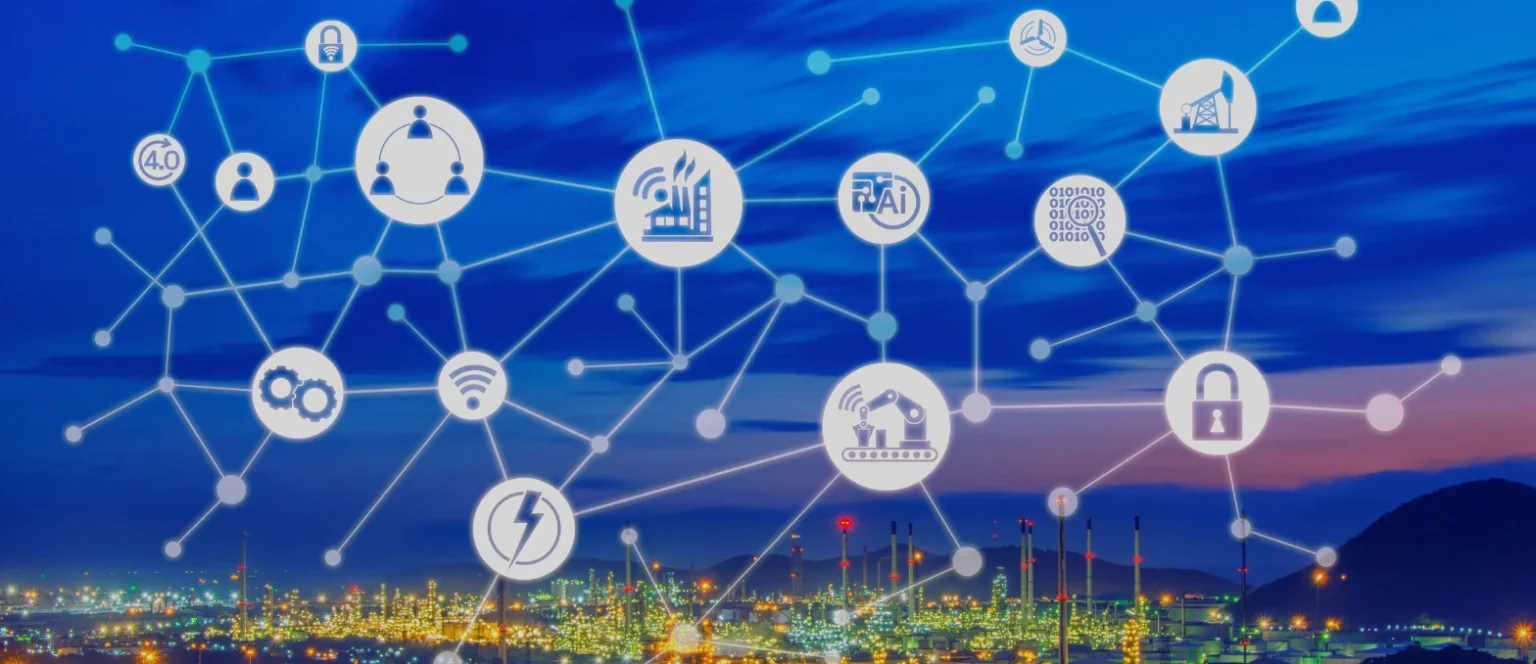Software development consulting services are an ever-evolving landscape, and so are the security challenges associated with it. As we step into 2025, the importance of security in software development cannot be overstated. This article delves into the significance of security in software development, highlights key threats to be aware of, explores why security preparations are sometimes overlooked, and provides a comprehensive guide on the top security practices that can safeguard your software.
In a period where technology is continually advancing, security in software development is of the most extreme significance. With digital dangers turning out to be more modern, developers must focus on protecting their products. As the world turns out to be more dependent on software built by custom software development services, the requirement for powerful safety efforts turns out to be progressively apparent. However, cyberattacks have turned into a pervasive issue, leading to data breaks and compromised frameworks.
To battle these dangers, developers should keep up-to-date with the most recent security practices and carry out them. Security in software development is not a one-time exertion and it requires a proactive way to deal with guarantee the well-being and honesty of your product.
As we move into 2025, it is fundamental for digital transformation companies in USA to remain in front of expected dangers by taking on essential security practices. Thus, they can defend their product and safeguard the touchy data it holds. In this article, we will investigate the ten fundamental security in software development security practices that will assist you with bracing your product in 2025.
Table of Contents
Transform Your Software Vision into Reality – Book A 30 Minutes Free Consultation!
What is The Importance of security in software development Security?
Security in software development is not a luxury but a necessity. However, in an era where cyber threats are ever-present, safeguarding your software is paramount. A breach can lead to data theft, financial losses, and damage to your reputation. Security practices should be integrated from the very beginning of the development process to mitigate risks effectively.
The significance of security in software development couldn’t possibly be more significant in our undeniably digitized world. Security isn’t simply a choice but it’s an outright need. There are a few convincing justifications for why software development security is of principal significance:
1. Security Against Digital Threats:
The advanced scene is overflowing with digital dangers. Malignant entertainers, going from individual programmers to coordinated cybercrime gatherings, continually look for weaknesses in software in order to take advantage of them. Safety efforts are the primary line of safeguard against these dangers.
2. Protecting Delicate Data:
Numerous product applications handle touchy and classified data, like individual data, monetary records, and business insider facts. Deficient security likewise can bring about data breaks which can lead to financial misfortunes, lawful liabilities, and notoriety harm.
3. Trust and Reputation:
Clients expect that the product they use is secure and their data is safeguarded. A security break however can disintegrate trust and stain the standing of both the product and the association liable for it. Modifying trust is many times more testing than laying out it in any case.
4. Administrative Compliance:
Different enterprises are dependent upon severe data security and protection guidelines, like GDPR in Europe and HIPAA in health care. The inability to follow these guidelines can prompt extreme lawful results. software security is a vital part of consistency.
5. Cost Savings:
Forestalling security breaks is undeniably more financially savvy than managing the consequences. Security occurrences can bring about critical monetary misfortunes, including costs connected with episode reaction, lawful activities, and pay to impacted parties.
6. Protected technology Protection:
Software frequently exemplifies protected technology (IP) as calculations, code, and imaginative highlights. Safeguarding this IP from burglary or figuring it out is critical for the upper hand and productivity of the association.
7. Business Continuity:
Security breaks can upset business activities, leading to margin time, loss of income, and harm to efficiency. And so guaranteeing software security keeps up with business congruity.
8. Cutthroat Advantage:
In a market where clients have different choices, offering secure software can be the upper hand. However, clients progressively know and pick items and services that focus on their security.
9. Long haul Viability:
Software with vigorous safety efforts is bound to have a more extended life expectancy. However, as security dangers advance, software that can adjust to these progressions is bound to stay suitable.
Overall, security in software development is fundamental for shielding data, safeguarding trust, following guidelines, and protecting reality. It’s anything but a secluded thought yet ought to be a vital piece of the product development process from its initiation to arrangement and continuous upkeep. The significance of software security will just keep on developing as our dependence on technology extends with software development consulting services.
What are the Top Security Threats to Remember While Developing Software?
While creating software, it’s urgent to know about the top security dangers that can think twice about the honesty and usefulness of your applications. However, understanding these dangers permits you to go to proactive lengths to alleviate chances. Here are the main 8 security dangers to recollect while creating software, alongside clarifications:
1. Injection Attacks:
Infusion assaults, for example, SQL infusion or Cross-Site Prearranging (XSS), happen when an assailant infuses vindictive code or data into your application. This can lead to data breaks, unapproved access, and data control.
2. Validation and Approval Flaws:
Powerless or defective confirmation components can permit unapproved clients to get to your framework. However, approval imperfections might prompt clients to have a greater number of honors than planned, compromising data security.
3. Insecure Deserialization:
Shaky deserialization can bring about an assailant executing erratic code. Thus it’s fundamental to approve and disinfect serialized data to forestall this kind of assault.
4. Security Misconfigurations:
Security misconfigurations can occur at different levels, including servers, databases, and application settings. Thus aggressors can take advantage of these misconfigurations to acquire unapproved access or recover delicate data.
5. Cross-Site Request Forgery (CSRF):
CSRF assaults stunt clients into performing undesirable activities on an alternate site where they’re verified. And so this can lead to moves being made without the client’s assent.
6. Broken Validation Sessions:
When validation meetings are not sufficiently made due, assailants can seize meetings and mimic clients, thus leading to unapproved access to their records.
7. Lacking Data Protection:
Neglecting to safeguard data sufficiently, both on the way and very still can lead to data breaks. And so this incorporates not scrambling sensitive data and not utilizing secure correspondence conventions.
8. Unvalidated Input:
Info that isn’t as expected approved can lead to different security issues, including support spills over, order infusion, and different weaknesses. Thus guaranteeing that all client inputs are approved and cleaned is essential to forestall these dangers.
By understanding these security dangers and executing best practices to relieve them, you can fundamentally upgrade the security of your product. However, security ought to be an essential piece in security in the software development process, from planning to sending, to safeguard your applications and the delicate data they handle.
Innovate, Automate, and Excel with A3logics Custom Software Development Services
Why Do Developers Skip Security Preparations?
Sometimes, developers overlook security preparations due to various reasons, such as tight deadlines, lack of awareness, or complacency. Exploring these reasons can help organizations address the issue at its root.
Engineers some of the time skip security arrangements in light of multiple factors, notwithstanding the basic significance of safety in security in software development. However, understanding these reasons is fundamental for organizations to resolve the issue.
1. Tight Deadlines:
Developers frequently work under close task cutoff times and extreme strain to rapidly convey software. Thus in such circumstances, security should be visible as a tedious cycle that would postpone project consummation. The desperation to comply with time constraints can prompt the oversight of safety checks and precautionary measures.
2. Absence of Awareness:
Not all developers are knowledgeable in online protection practices. And so some might miss the mark on essential data and preparing to execute safety efforts successfully. However, this data hole can bring about the disregard of safety arrangements, as developers probably won’t know about expected dangers.
3. Complacency:
In situations where past ventures have not experienced security breaks, there can be a feeling of carelessness. Developers could expect that their product is safe from assaults or that security is not a squeezing concern. However, this carelessness can prompt an absence of tirelessness in security arrangements.
4. Financial Constraints:
Safety efforts frequently require extra assets, both regarding apparatuses and the workforce. Therefore, the chance that a venture is working with a restricted financial plan, and spending on safety efforts may be viewed as a superfluous cost. Thus this monetary requirement can bring about inadequate security arrangements.
5. Adjusting Features and Security:
Engineers here and there anyway face a compromise between adding new highlights and improving security. And so the strain to convey highlight-rich software can eclipse security contemplations. However, this compromise can prompt a focus on usefulness over security.
6. Misconceptions:
Developers might be confused about security, and so it is pointless or excessively complex to accept specific security practices. Thus this can prompt the oversight of basic security steps.
7. Absence of Incentives:
At times, developers might not have areas of strength for have to focus on security. Thus they probably won’t be considered responsible for security breaks or may not get acknowledgment or awards for carrying out vigorous safety efforts.
8. View of Low Risk:
Assuming developers see the product or the association as a low-esteem focus for cyberattacks, they could expect that safety efforts are not required. However, this view of generally safe can change rapidly, making the product powerless.
Thus, to address these difficulties, organizations should focus on security in their development processes. This incorporates giving sufficient preparation and assets to engineers, ingraining a security-first culture, and coordinating security into the security in the software development life cycle .
Security ought not be seen as a deterrent, however as a fundamental part of security in software development, guaranteeing the insurance of data, clients, and the actual association.
What is the Policy for Secure Software Development?
The Strategy for security in software development is an organized arrangement of rules and rules that organizations layout to guarantee that product development processes focus on and coordinate safety efforts at each stage. However, this strategy fills in as a primary record that frames the association’s obligation to make and keep up with secure software.
Key components of a Strategy for Secure security in software development ordinarily include:
1. Security Objectives:
It characterizes the all-encompassing security objectives and goals that the association expects to accomplish through its security in software development processes. However, this might incorporate safeguarding data, forestalling security breaks, and guaranteeing consistency with pertinent guidelines.
2. Jobs and Responsibilities:
The approach frames the particular jobs and obligations of people or groups associated with security in software development concerning security. Thus this explains who is answerable for carrying out safety efforts and guarantees responsibility.
3. Security Standards and Best Practices:
It determines the security norms, rules, and best practices that development groups should comply with. However, these may envelop coding principles, encryption conventions, validation techniques, and secure engineering plans.
4. Threat Modeling:
The strategy frequently stresses the significance of danger demonstrating, which includes distinguishing potential security dangers and weaknesses in the product from the get-go in the development cycle. However, this aids in concocting methodologies to alleviate chances.
5. Secure Coding Practices:
It advances secure coding standards and practices that developers ought to integrate while composing code. However, this incorporates input approval, mistake taking care of, and secure data stockpiling.
6. Consistency Requirements:
Assuming that the product is planned for use in controlled ventures, however, the strategy might determine consistence prerequisites that should be met, like HIPAA for health care or GDPR for data security.
7. Testing and Evaluation:
The arrangement might frame necessities for security testing, including entrance testing, weakness examining, and code audits, to guarantee the product’s security is thoroughly surveyed.
8. Occurrence Response:
A strategy regularly incorporates methods and responsibilities regarding answering security episodes. However, this guarantees that the association is ready to address and moderate any security breaks.
9. Preparing and Awareness:
It highlights the requirement for progressing security preparation and mindfulness projects to teach development groups about arising dangers and best practices in software security, thus keeping them prepared.
10. Correction and Updates:
The strategy ought to be a living record that considers modifications and updates as security dangers and technologies develop. However, normal audits and developments are fundamental to keeping up with the arrangement’s importance.
By laying out and sticking to a Strategy for Secure security in software development, organizations can methodically incorporate security into their development processes, lessen weaknesses, and upgrade the general security stance of their product items. However, it goes about as a proactive measure to protect against security breaks and data splits the difference.
Empower Your Business with Cutting-Edge Software. Request a Free Consultation Today!
Top 10 Software Development Security Practices for Secure Software Development
During a time of industrious digital dangers, guaranteeing the security of software applications has become central. Security in software development practices safeguards delicate data as well as keeps up with the trust of clients.
The following are the main 10 security practices that each product development group ought to embrace to assemble secure software in 2025:
1. Secure Coding Standards and Best Practices:
Secure coding standards are the underpinning of software security. developers ought to follow laid-out prescribed procedures like info approval, yield encoding, and meeting the executives to alleviate normal weaknesses, for example, SQL infusion and cross-site prearranging (XSS).
2. Danger Displaying and Hazard Alleviation Strategies:
Distinguishing possible dangers, and is essential to figure out their effect. Danger demonstrates surveys dangers and devises techniques to relieve them. However, it guides security endeavors towards the most basic regions.
3. Data Assurance and Secure software Interface Development:
Data breaks are a critical concern. However, secure data assurance works, including encryption and secure key services, are fundamental. While creating APIs, guarantee they are planned considering security and access to delicate data is controlled.
4. Nonstop Security Observing and Adaptation:
Security is a continuous interaction. Persistent checking, weakness filtering, and danger discovery components are important to expeditiously recognize and answer security occurrences. However, transformation is vital to remain in front of arising dangers.
5. Secure Deploying Strategies and Considerations:
The software can become helpless during deployment. Secure deploying works, including the utilization of secure compartments and orchestrators, limit the gamble of presenting weaknesses while carrying out software to clients.
6. Client Verification and Access Control Protocols:
Unapproved access is a typical security concern. Hence, carry out strong client validation and access control conventions to guarantee that main approved clients can get to explicit capabilities and data inside your application.
7. Update Strategies:
Staying up with the latest is basic. Also, apply security fixes and updates to address known weaknesses in both your application and its conditions.
8. Episode Reaction Anticipating Upgraded Security:
No framework is completely invulnerable to breaks. However, having an episode reaction plan set up guarantees a quick and composed reaction to security occurrences. It limits harm and recuperates from the effect of an occurrence successfully.
9. Security Training and Preparing for Development Teams:
Security mindfulness among development groups is central. However, customary preparation and training on security best practices, weaknesses, and secure coding standards ought to be a necessary piece of the development interaction.
10. Consistency and Guidelines in Software Security:
Contingent upon your industry and the kind of software you create, consistency with industry-explicit guidelines and security norms might be required. However, sticking to these norms guarantees legitimate consistency as well as builds up security.
Embracing these security practices, however, requires a comprehensive and proactive way to deal with security in software development. Coordinating security from the underlying plan stage, constant testing and observing, and remaining informed about the developing danger scene are fundamental stages toward building secure software.
By making security a fundamental piece of the development cycle, software groups can decrease weaknesses and safeguard their applications and clients from likely dangers.
How to Select the Best Software Development Service Provider for Your Project?
When seeking a security in software development service provider , security should be a top criterion. Hence, this section guides on selecting a provider that prioritizes security in their development practices.
Choosing the best security software development specialist co-op for your project is an essential choice that can fundamentally influence the achievement and security of your product. However, to settle on an educated decision, think about the accompanying key variables:
1. Mastery and Experience:
Search for a specialist co-op with a history of effectively conveying projects like yours. However, their mastery of your space and technology stack can have a significant effect.
2. Security Practices:
Security ought to be a first concern. Ask about their security conventions, how they handle data, and their way of dealing with tending to security weaknesses. However, a guarantee to get coding and normal security evaluations is a decent sign.
3. Transparency:
Straightforward correspondence is indispensable. However, the supplier ought to be open about their development cycles, timetables, and expected difficulties. This forms trust and guarantees you know about the project’s progress.
4. Scalability:
Guarantee the supplier can scale assets and oblige your project’s development. Whether you want to extend the group or upgrade highlights, adaptability is fundamental.
5. Quality Assurance:
Get some data about their quality affirmation practices, for example, testing strategies and bug following. However, thorough testing guarantees a great final result.
6. Communication and Collaboration:
Powerful communication is basic for project achievement. Pick a supplier that values joint effort, keeps you informed, and is receptive to your input and inquiries.
7. References and Portfolio:
Demand references and audit their portfolio. Contact past clients to assemble experiences into the supplier’s exhibition, dependability, and the nature of their work.
8. Cost and Spending Plan Adherence:
Comprehend the estimating structure and guarantee it lines up with your financial plan. Nonetheless, don’t think twice about for cost. The most reduced bid may not necessarily in every case mean the best worth.
9. Technology Stack:
Guarantee the supplier is knowledgeable in the technology stack pertinent to your task. However, capability in the picked devices and structures is fundamental.
10. Social Fit:
Think about the social fit between your association and the specialist co-op. However, similarity in work culture and values can prompt smoother coordinated effort.
11. Post-development Support:
Ask about post-development backing and support services. However, a decent supplier will offer continuous help to resolve issues and updates after project consummation.
12. Consistency and Regulations:
Assuming your venture includes delicate data or industry-explicit guidelines, guarantee the supplier is agreeable with significant norms and guidelines.
13. Cutoff times and Timelines:
Characterize project courses of events and assumptions. The supplier ought to have a background marked by fulfilling time constraints and following through on time.
14. Flexibility:
Projects can advance. Pick a supplier that can adjust to changing necessities and change the project degree on a case-by-case basis.
15. Contract and Legitimate Aspects:
Audit the agreement completely. Guarantee it remembers subtleties for project scope, achievements, installment terms, protected technology privileges, and question goal techniques.
16. Notoriety and Reviews:
Research online audits and check the supplier’s standing on stages like Grip, Upwork, or LinkedIn. Positive surveys and proposals from different clients can be characteristic of their abilities.
Via carefully considering these elements and directing the expected level of investment, you can pick security in software development specialist organization that lines up with your project’s necessities, guaranteeing a successful and secure development venture.
Ready to Build? Let’s Create Your Software Solution Today!
Final Thoughts
In the powerful scene of security in software development, security has never been more basic than in 2025. As technology keeps on progressing, so do the dangers that can risk your product and the data it handles. The “10 Fundamental Software Development Security Practices” illustrated in this article act as an extensive manual for shielding your product against arising gambles.
These practices highlight the significance of secure coding, danger demonstrating, data insurance, ceaseless security observing, and client validation, promoted by custom software development companies in USA. They stress the meaning of keeping awake to date with fixes and updates, getting ready for security episodes, and giving security training to development groups. Conforming to industry-explicit guidelines is perceived as an essential move toward guaranteeing vigorous software security.
The meaning of these security practices couldn’t possibly be more significant. They shield your product from digital dangers as well as maintain your standing and the trust of your clients. In a period where data breaks and cyberattacks keep on standing out as truly newsworthy, proactive safety efforts are as of now not a choice; they are a need.
By embracing artificial intelligence in software development, software developers and organizations can invigorate their products against the consistently developing danger scene. A pledge to building software isn’t just practical but additionally versatile despite ill-disposed powers.
As we push ahead into 2025 and then some, the job of safety in security in software development will keep on developing. The standards framed here will stay essential in getting software applications, and they act as a signal for developers and organizations looking to brace their digitized resources.
All in all, embracing these 10 security practices is a proactive step towards guaranteeing the well-being and honesty of your product. By making security a fundamental piece of your development cycle, you are shielding your product as well as maintaining the trust of your clients and partners. In a quickly changing digitized scene, security is the foundation on which solid and resilient software is constructed.
Your Questions, Our Answers: Navigating the FAQs with Expertise!
Q1. What is software development security, and why is it important?
Software development security refers to the arrangement of practices and measures executed to safeguard programming applications and the information they handle from security dangers and weaknesses. It’s necessary because the product frequently manages delicate data, and weaknesses can prompt information breaks, monetary misfortunes, and harm to notoriety. Without security, programming is presented with dangers like cyberattacks, information burglary, and pernicious abuse.
Q2. What are the common security threats that software development faces?
Common security threats in software development incorporate malware, phishing, SQL injection, cross-site scripting, ransomware, and zero-day vulnerabilities. These threats can prompt information breaks, unapproved access, information control, and other pernicious exercises.
Q3. Why do developers sometimes overlook security preparations during development?
Developers might disregard security arrangements because of tight undertaking cutoff times, the absence of safety mindfulness, or an emphasis on usefulness over security. Some of the time, it’s expected that security can be added later, which can lead to weaknesses. Neglecting security is a gamble that associations ought to effectively address.
Q4. What is the significance of having a policy for secure software development?
A strategy for secure software development gives an organized structure to incorporating security rehearses into the product improvement process. It sets assumptions, rules, and responsibilities regarding security all through the development lifecycle. This strategy guarantees consistency and forestalls security oversights.
Q5. How can secure coding principles and best practices enhance software security?
Secure coding standards stress composing code considering security. This incorporates input approval, information encryption, and secure error-taking care. By following accepted procedures, developers can forestall normal weaknesses like support spills over and infusion assaults, essentially improving programming security. These standards guarantee that weaknesses are not incidentally presented during improvement.






